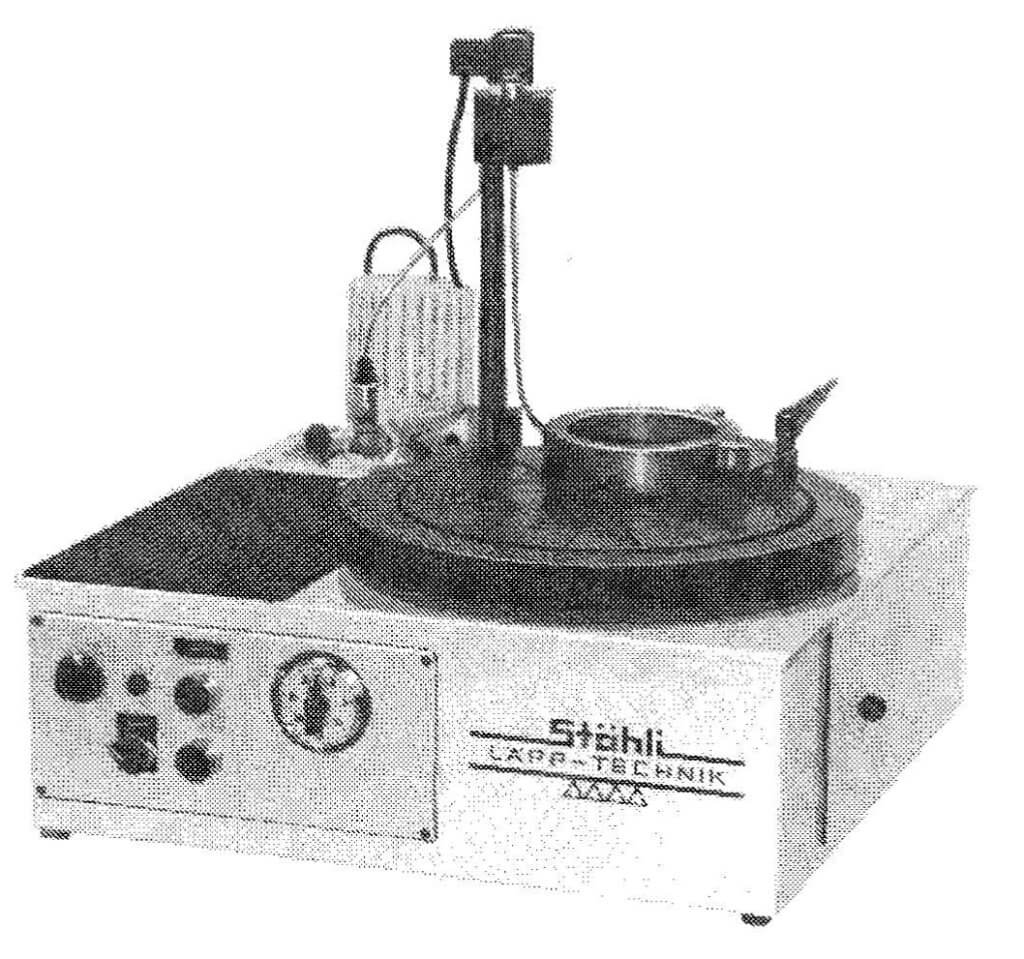The Technique of Lapping
Hand Lapping
Hand lapping is now only rarely used. This method is expensive and requires a high degree of skill. With skilled specialists retiring, companies find it difficult to obtain younger men who possess the same necessary ability. It is still suitable for one-off items, fitting work, and small production series. In cases where hand lapping is indispensable, the same conditions as for mechanical lapping must be maintained to produce a precision surface. In other words, good hand lapping plates (Figure 13) and suitable lapping agents must be available.

Hand lapping is not an easy process. Realizing, for example, holding the workpieces with the fingers or with unsuitable work holders can lead to undesirable results. In the result of such, uneven warming of the part, distortion, or imperfect flatness due to uneven loading of the lapping surface can develop. Even an intermittent, stop-start action can be a source of an error. Ideally, the part should be pre-lap with a figure-of-eight movement on a cast iron lapping plate. It helps ensure that all areas on the surface travel approximately the same distance. This type of movement requires large lapping plates. Oval movements are simpler and are effective if the workpiece is turning several times.
Hand Lapping can easily lead to issues
One problem is maintaining plate flatness. Lapping plates should be re-ground, or better still machine-lapping from time to time. This can be complete by the plate manufacturer. It is common practice to give the plates a slightly convex form in order to counter the usual heavier wear in the middle.
The most important requirement in hand lapping to reach the desired precision surface is that the lapping-oil film should be saturated evenly with grit particles. If this lapping film contains too much-abraded material, it becomes black and resinous in most cases. A rule of thumb is that when lapping with the intention of removing material, the movement should be light and even; for polishing, more pressure can be applied. More frequent cleaning of the lapping surface and inspection of the process produce the best results.

Bench-type lapping machine for hand
lapping and machine lapping,
equipped with lapping medium pump,
variable distribution head,
variable-speed drive and timer.
A bench lapping machine with a cast iron lapping plate diameter of 300 mm was developed as an interesting intermediate solution (Figure 14) This machine allows both manual and machine lapping. The difference is that the working plate (lapping plate) rotates, while the workpiece is moving to-and-fro across the surface. The process is considerably simplified, and results of high to very high quality, comparable to those given by larger machines, can be obtained.

